
A barnacle is a type of arthropod constituting the subclass Cirripedia in the subphylum Crustacea, and is hence related to crabs and lobsters. Barnacles are exclusively marine, and tend to live in shallow and tidal waters, typically in erosive settings. They are sessile (nonmobile) and most are suspension feeders, but those in infraclass Rhizocephala are highly specialized parasites on crustaceans. They have four nektonic larval stages. Around 1,000 barnacle species are currently known. The name "Cirripedia" is Latin, meaning "curl-footed". The study of barnacles is called cirripedology.

Balanus is a genus of barnacles in the family Balanidae of the subphylum Crustacea.

Thecostraca is a class of marine invertebrates containing over 2,200 described species. Many species have planktonic larvae which become sessile or parasitic as adults.

The Balanidae comprise a family of barnacles of the order Balanomorpha. As a result of research published in 2021 by Chan et al., the members of the family Archaeobalanidae were merged with this family.

Megabalanus is a genus of barnacles in the family Balanidae. Members of the genus grow to 7 cm (2.8 in) in length and inhabit the lower intertidal zone.

Chthamalus is a genus of barnacles that is found along almost all non-boreal coasts of the northern hemisphere, as well as many regions in the southern hemisphere. These small barnacles have been studied in part because of the taxonomic confusion over a group of species that, by and large, are morphologically and ecologically quite similar. In recent years, molecular techniques have identified a number of cryptic species that have been subsequently confirmed by taxonomists using morphological measurements. Most recently the genus has been shown to be paraphyletic, with the genus Microeuraphia nested within Chthamalus.
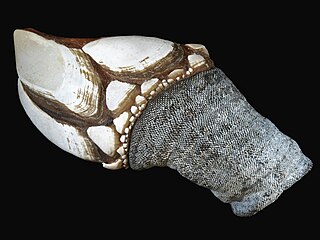
Pollicipes pollicipes, known as the goose neck barnacle, goose barnacle or leaf barnacle is a species of goose barnacle, also well known under the taxonomic synonym Pollicipes cornucopia. It is closely related to Pollicipes polymerus, a species with the same common names, but found on the Pacific coast of North America, and to Pollicipes elegans a species from the coast of Chile. It is found on rocky shores in the north-east Atlantic Ocean and is prized as a delicacy, especially in the Iberian Peninsula.

Acasta is a genus of barnacles in the family Balanidae, containing the following species:

Pollicipes is a genus of goose barnacles, first described by William Elford Leach in 1817. It comprises four species of marine suspension-feeders.
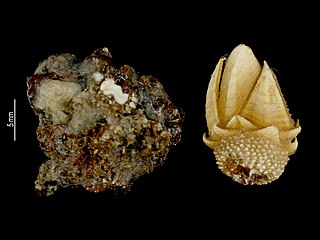
Calanticidae is a family of acorn barnacles in the order Calanticomorpha. There are about 12 genera and more than 60 described species in Calanticidae.
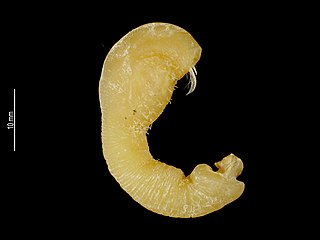
Heteralepas is a genus of goose barnacles in the family Heteralepadidae.
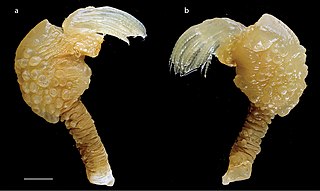
Paralepas is a genus of goose barnacles in the family Heteralepadidae.

Poecilasmatidae is a family of goose barnacles.
Oxynaspis is a genus of goose barnacles in the order Lepadiformes.

The clade Multicrustacea constitutes the largest superclass of crustaceans, containing approximately four-fifths of all described crustacean species, including crabs, lobsters, shrimps, woodlice, prawns, krill, barnacles, crayfish, copepods, amphipods and others. The largest branch of multicrustacea is the class Malacostraca.

Cryptolepas rhachianecti is a species of whale barnacle that lives as a passenger on the skin of gray whales and certain other species of whale in the northern Pacific Ocean.
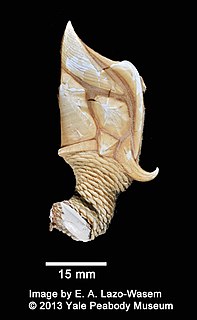
Scalpellidae is a family of acorn barnacles in the order Scalpellomorpha. There are about 25 genera and 220 described species in Scalpellidae.

Calanticomorpha is an order of acorn barnacles in the class Thecostraca. There are 3 families and more than 90 described species in Calanticomorpha.
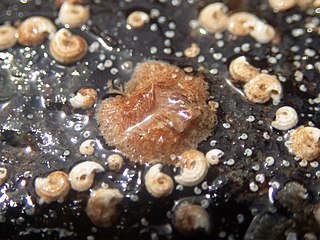
Verruca is a genus of asymmetrical sessile barnacles in the family Verrucidae. There are about 20 described species in Verruca, around half of them extinct.














